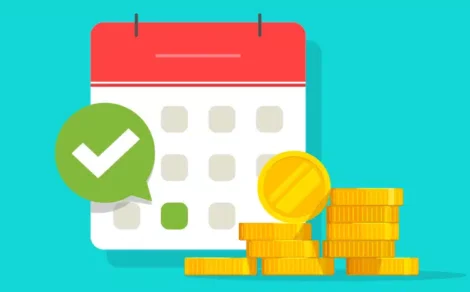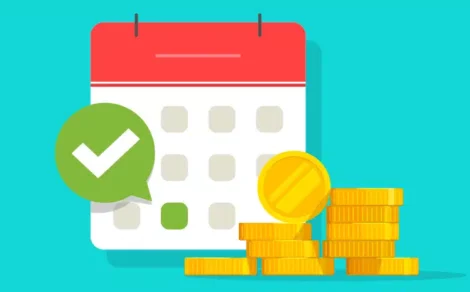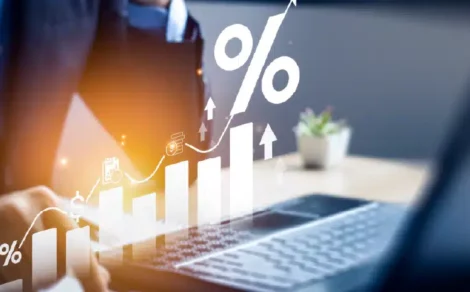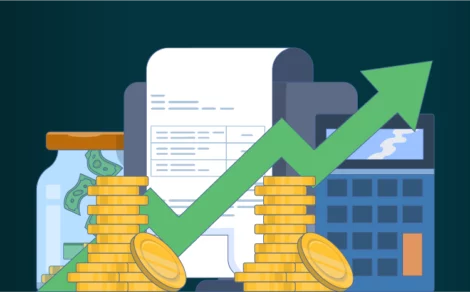In the complex world of monetary policy, the repo rate is one of the most influential tools central banks use to steer a nation’s economy. It influences lending rates, controls inflation, and helps manage liquidity in the financial system. But what is repo rate exactly?
Understanding the Repo Rate
In simple terms, the repo rate meaning is the rate at which the central bank lends money to commercial banks against government securities. The term repo stands for ‘repurchase agreement’, a short-term borrowing arrangement. The repo rate definition thus reflects the cost of short-term borrowing for banks, which they typically pass on to consumers and businesses.
Changes in the repo rate affect everyone from the person paying EMIs on a home loan to businesses planning to expand. It is closely watched by economists, bankers, and investors alike because of its wide-reaching implications.
Mechanics Behind the Repo Rate
The repo rate is not just an arbitrary number. It functions through a process called a repurchase agreement, where banks sell government bonds to the RBI with an agreement to repurchase them at a later date and a slightly higher price. The difference in the price determines the effective interest rate, and this is the repo rate.
This transaction allows banks to maintain liquidity when they are short on cash. For example, during festivals or financial year-ends, banks may face a sudden rise in withdrawals or credit demands. Instead of turning away customers, they borrow from the RBI using government bonds as collateral and continue lending.
The central bank uses this mechanism to inject or absorb liquidity into the system. If the RBI wants to cool down the economy, it increases the repo rate to make borrowing costlier. If it wants to spur growth, it cuts the repo rate, making funds cheaper and more accessible.
Significance of the Repo Rate in the Economy
The repo rate is a central tool for maintaining macroeconomic stability. One of its key roles is inflation control. Inflation reduces purchasing power and can hurt savings. When inflation rises beyond comfort levels, the central bank hikes the repo rate to discourage borrowing and reduce the money circulating in the economy.
Apart from inflation, it also influences economic growth. In periods of economic slowdown, the RBI might reduce the repo rate to make borrowing cheaper. Lower interest rates encourage both businesses and consumers to spend and invest, boosting economic activity.
Finally, repo rate changes affect expectations. A repo rate hike signals tightening monetary policy, which could suggest inflation concerns. A cut, meanwhile, indicates a push for growth. These signals influence stock markets, currency values, and investor sentiment.
Who Controls the Repo Rate in India?
The Monetary Policy Committee (MPC) of the Reserve Bank of India is responsible for setting the repo rate. The MPC was established under the RBI Act, 1934, and comprises six members, i.e., three from the RBI and three nominated by the government. The RBI Governor chairs the committee.
The MPC meets every two months to review macroeconomic trends, inflation forecasts, and financial stability before deciding on the repo rate. They weigh a variety of indicators, such as global commodity prices, fiscal policy, employment data, and consumer demand.
While the committee’s decisions are forward-looking, they are also cautious. A hasty move can disrupt financial markets or derail economic recovery. That’s why every change in the repo rate is the result of intense scrutiny and data analysis.
Factors Influencing the RBI’s Repo Rate Decisions
The RBI uses a data-driven approach to determine the repo rate. The two primary factors are inflation and growth. The central bank uses the Consumer Price Index (CPI) to measure inflation trends. If inflation crosses the target band (typically 4% ± 2%), the RBI considers raising the repo rate.
Economic growth is equally important. If GDP growth slows down, the RBI may cut the repo rate to stimulate borrowing and investment. The RBI also considers global interest rate trends, fiscal policy stances, and the strength of the rupee when evaluating its repo policy.
Another factor is the output gap, the difference between actual and potential economic output. If actual output is much lower, it signals an underperforming economy and may prompt a repo rate cut. Conversely, an overheating economy may require a rate hike.
India’s Current Repo Rate:
As of April 2025, the current repo rate in India is 6.00%. This has been maintained over several months as the RBI attempts to balance inflation control with sustained economic recovery after global economic shocks and domestic challenges.
This repo rate reflects the RBI’s cautious stance. While inflation has shown signs of moderation, external risks such as rising oil prices and currency volatility still pose challenges. Hence, the RBI has opted to keep the rate unchanged in its most recent monetary policy meeting.
The current rate directly impacts interest rates on home loans, car loans, and other forms of credit. Many banks have already adjusted their lending and deposit rates in line with the prevailing repo rate, affecting household budgets and investment decisions.
Economic Ripple Effects of Repo Rate Changes
When the repo rate changes, a chain reaction is triggered in the economy. Most notably:
- Home Loan and Auto Loan EMIs – A hike in the repo rate usually makes loans costlier, increasing EMIs. A cut reduces borrowing costs and eases monthly outgo.
- Deposits and Savings – Higher repo rates often lead to higher deposit rates, encouraging savings. Lower repo rates may reduce returns on fixed deposits and savings accounts.
- Business Investments – Lower repo rates can encourage businesses to borrow more for expansion, while higher rates might delay or cancel investment plans due to the increased cost of capital.
How Repo Rate Affects Borrowers and Savers?
For individual consumers, the repo rate touches nearly every financial aspect. Whether you’re planning to buy a house, finance a car, or take a personal loan, the interest you pay is indirectly influenced by the repo rate.
When the repo rate goes up, banks find it costlier to borrow money. To maintain their profit margins, they increase the interest rates on consumer loans. This leads to higher EMIs for existing borrowers under floating rate loans and discourages new borrowers.
On the flip side, if the repo rate falls, banks reduce loan interest rates. This is good news for borrowers, but it also means deposit interest rates go down, reducing returns for savers. It’s a delicate balance between promoting spending and encouraging saving.
Repo Rate and Business Decision-Making
From small traders to large corporations, the repo rate plays a significant role in shaping business decisions. A higher repo rate translates into costlier business loans. This may lead companies to cut down on capital expenditure, delay projects, or even freeze hiring.
Businesses operating on thin margins or heavily reliant on working capital loans feel the pinch when rates rise. On the contrary, a lower repo rate brings in optimism. Access to cheaper credit allows for expansion, technology upgrades, and increased employment.
The repo rate also impacts stock market sentiment. Sectors like real estate, automobiles, and banking are highly sensitive to interest rates. A hike may lead to a market pullback, while a cut can boost investor confidence and push stock prices higher.
Comparing Repo and Reverse Repo Rates
While the repo rate is about the RBI lending money to commercial banks, the reverse repo rate is the opposite. It is the rate at which the RBI borrows money from commercial banks. Banks Park their excess funds with the RBI at this rate, earning interest.
The reverse repo acts as a tool for the RBI to absorb excess liquidity from the market. When inflation is high or liquidity is abundant, the RBI may raise the reverse repo rate to incentivise banks to keep more funds with it rather than lend in the open market.
The spread between repo and reverse repo rates indicates the RBI’s liquidity stance. A narrow spread means neutral liquidity, while a wide spread signals aggressive liquidity management. Both rates are adjusted in tandem depending on the macroeconomic outlook.
How Repo Rate Impacts Lending Through Monetary Transmission?
Monetary transmission refers to the process by which repo rate changes affect interest rates in the broader economy. In India, this transmission has traditionally been slow due to rigid lending practices, the dominance of fixed-rate loans, and legacy banking systems.
However, with the introduction of External Benchmark Lending Rates (EBLR) in 2019, transmission has improved. Now, loan interest rates are linked to external benchmarks like the repo rate. This has made rate changes more effective and transparent for consumers.
Efficient monetary transmission ensures that the RBI’s policy decisions influence credit availability and demand. Without it, changes in repo rate remain symbolic rather than impactful. Ongoing reforms aim to make the system more responsive and market-driven.
Conclusion
To sum up, the repo rate is a powerful tool in the hands of the Reserve Bank of India to maintain financial and economic stability. From controlling inflation to guiding economic growth and influencing interest rates across the banking system, it plays a critical role in shaping the economic environment.
Understanding how the repo rate works can help individuals and businesses make more informed financial decisions. Whether you’re a borrower, saver, investor, or entrepreneur, the repo rate affects your money in more ways than one. As such, keeping an eye on the repo rate can offer valuable insights into where the economy is heading.








